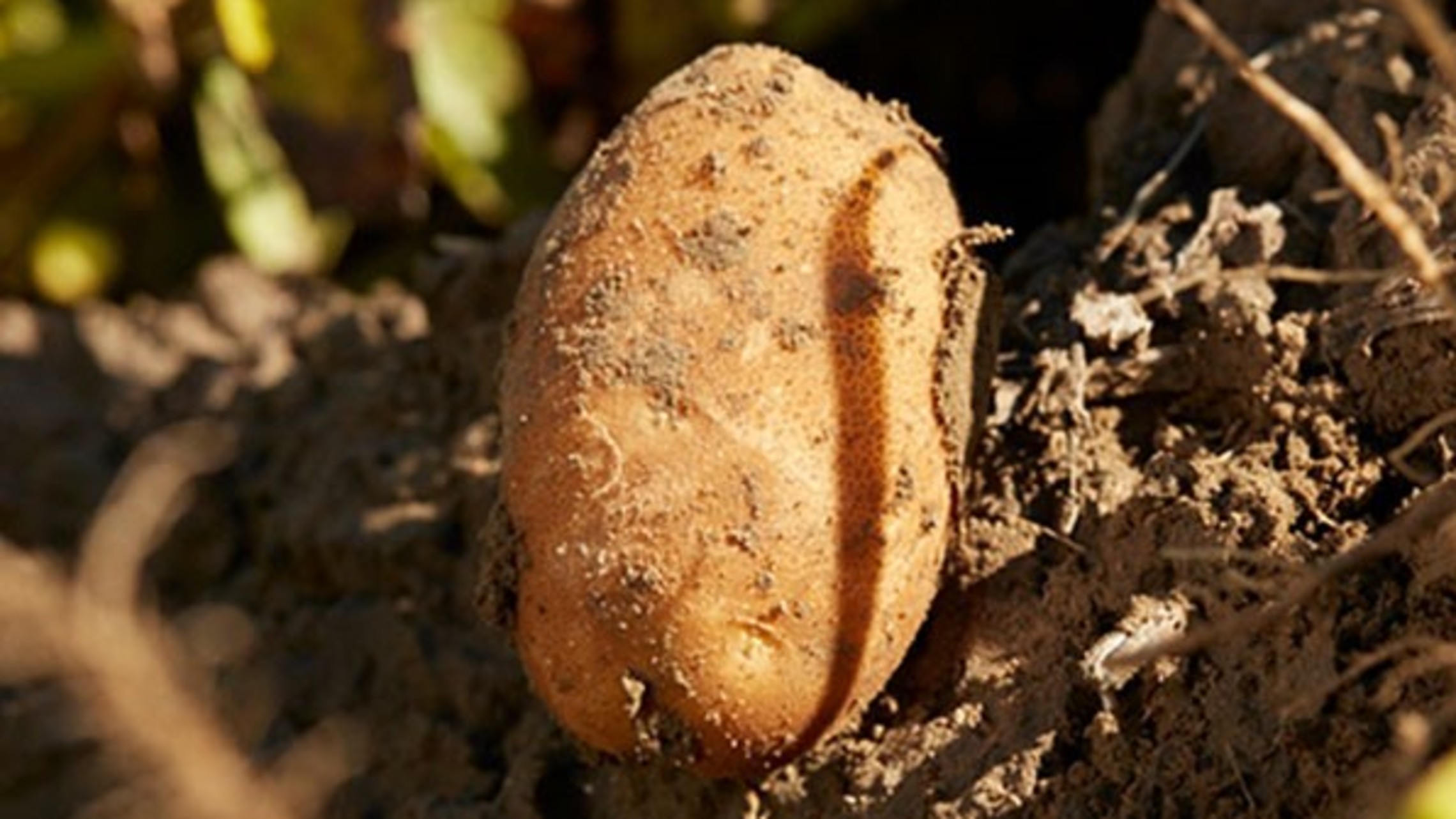Bust through black dot
Preserve potato yield and quality through disease management

Most farmers don’t discuss black dot as regularly as other diseases, such as white mold or early blight; however, black dot is a menace to many farmers. With its extended latent period, black dot can have a detrimental impact on farmers’ yield and potato quality.
“Black dot is not a disease that is as widespread as others, but for farmers who do have it in their fields, it tends to show up year after year,” said Curtis Rainbolt, BASF Technical Service Representative. “If farmers know their fields have a history of the disease, they should work with a BASF representative or crop consultant in their area to help control it.”
Protecting yield and quality
Though infection can happen early in the potato plant, signs of the disease typically don’t show up until much later in the growing season. By the time the disease shows up, yield and quality are unfortunately already at risk.
“This disease can cause the vine of a potato crop to die early, reducing the photosynthetic capability of the plant and the amount of nutrients delivered to the crop, ultimately reducing yield,” said Rainbolt.
When black dots appear on the tuber, the quality of a grower’s crop is downgraded, meaning they have to sell it at a lower price point.
Storage can also be problematic with potatoes affected by black dot. When placed in storage, infected potatoes can be more vulnerable to rotting, further reducing a grower’s yield.
Rainbolt recommends farmers get ahead of the disease by developing a disease management plan for their crop. With a plan, farmers can avoid the many risks associated with uncontrolled black dot.
Know your field and manage it well
As with any disease, farmers should be diligent about disease management practices. Given black dot’s latent period, Rainbolt recommends farmers keep track of any instances of disease susceptibility.
“One of the best ways to control this disease is to know the field’s history,” said Rainbolt. “From there, farmers can select varieties and make other management decisions to lessen the risk of black dot.”
Part of a disease management plan should be reducing stress on a crop. The more stress there is on a crop, the more susceptible it is to disease.
“There are always things farmers can do to reduce stress in their fields during the growing season, such as watering and nutrient management,” said Rainbolt. “However, there are some decisions farmers need to make far in advance of the growing season to manage black dot.”
Crop rotation is one of those decisions. Since black dot is a soil-borne disease, rotation should be an important consideration for farmers who have seen the disease in the past.
“Crop rotation helps reduce the risk of black dot,” said Rainbolt. “The longer your rotation is, the more you can reduce the fungus or inoculum in the soil, but it doesn’t totally eliminate it.”
Fungicides should also be considered in a disease management plan. When applied preventatively, fungicides can be an effective tool for controlling black dot.
“BASF’s recommendations for control of black dot include use of a strobilurin fungicide early in the season,” said Rainbolt. “Strobilurin products are recommended because they have good efficacy. Priaxor® Xemium® brand fungicide is a product we recommend farmers use to control black dot because it has the strobilurin product in it, and it has good activity on the disease.”
Rainbolt further explained that the fungicide application should occur at the 10-inch rosette stage of the growing season, if conditions are favorable for disease development, in accordance with the label.
By protecting yield and quantity through knowing the field and managing it well, farmers can better control black dot and protect their crop. Farmers can work with a BASF representative or crop consultant in their area to determine a plan that best fits their needs and preserves their potato crop’s yield and quality.
For more information, contact your BASF representative or visit GrowSmartPotatoes.com.
Always read and follow label directions.
Priaxor and Xemium are registered trademarks of BASF.
